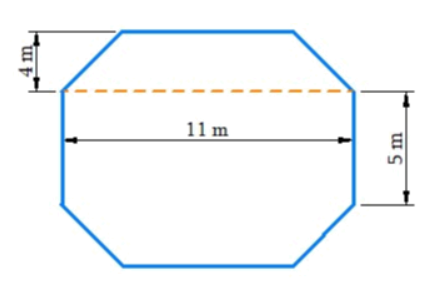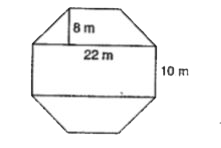In the given figure a quadrilateral is formed by joining the alternate vertices of a regular octagon. If the area of the octagon be 2(√2−1)sq cm, find the area of the square.

A) 2+√23−2√2
B) √2+√2√2+1
C) 3−2√2
D) √2(√2−1)
The correct Answer is:D
Step by step video & image solution for In the given figure a quadrilateral is formed by joining the alternate vertices of a regular octagon. If the area of the octagon be 2(sqrt2-1) sq   cm, find the area of the square. by Maths experts to help you in doubts & scoring excellent marks in Class 14 exams.
Updated on:21/07/2023Topper's Solved these Questions
Similar Questions
Knowledge Check
Find the area of a regular octagon with each side 'a' cm :
A2a2(1+√2)B√2a(1+π)Ca2(√2+2)Dnone of theseFind the area of a regular octagon with each side 'a' cm :
A2a2(1+√2)B√2a(1+π)Ca2(√2+2)Dnone of theseThe midpoints of alternating sides of a regular octagon are joined to form a square. If each side of the octagon is a, find each side of the square.
A(2+√2)a2B(4+√2)a2C2(1+√2)a√2D(2+√2)a
Top surface of a raised platform is in the shape of a regular octagon as shown in the figure. Find the area of the octagonal surface.

View SolutionIf the area of a regular hexagon 96√3 is square cm, then its perimeter is:
View SolutionAn equilateral triangle of area 300cm2 is cut from its three vertices to form a regular hexagon. Area of hexagon is what percent of the area of triangle?
View SolutionWhat is the interior angle of a regular octagon of side length 2 cm?
View SolutionTop surface of a raised plateform is in the shape of a regular octagon as shown in the figure.
Find the area of the octagonal surface.

View Solution

